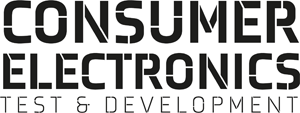The first Q-mark certificate has been awarded to Segway Navimow.
By testing and evaluating the quality and performance features of robotic lawn mowers, the TÜV Rheinland experts are going far beyond traditional safety aspects. The certification responds to the growing demand for more advanced technological performance and innovation in the robotic lawn mower industry, which is seeing significant growth in the EU and US markets.
The "Q-mark" system developed by TÜV Rheinland offers both users and manufacturers clear insights into comprehensive testing criteria and outcomes. The testing process covers multiple key criteria, including mowing efficiency, energy management, navigation skills, and user-friendliness. "Integrated technologies such as advanced sensors for obstacle detection, smart navigation algorithms, and optimized energy management systems are crucial in determining the performance of robotic lawn mowers," said Frank Holzmann, Global Business Field Manager for Electrical Products Testing at TÜV Rheinland. "Devices that pass our stringent tests represent outstanding performance and carry the Q-mark seal of quality."
Marc Zaplin, Regional Business Field Manager for Electrical Products Testing at TÜV Rheinland, added: “Our Q-mark certification serves as a proof of quality for manufacturers and as a confidence-building measure for consumers seeking technically advanced and efficient robotic lawn mowers.”
The Q-mark certification is represented by the unique certificate reference “2PfG Q2892”. The specific test results for each certified robotic lawn mower can be accessed through TÜV Rheinland's Certipedia certificate database by typing “Q2892” into the search field. A detailed presentation provides consumers with information on the test criteria applied. End-users can see how the product performs in various dimensions such as minimum passage width, escape from a small area or operational failure etc.

